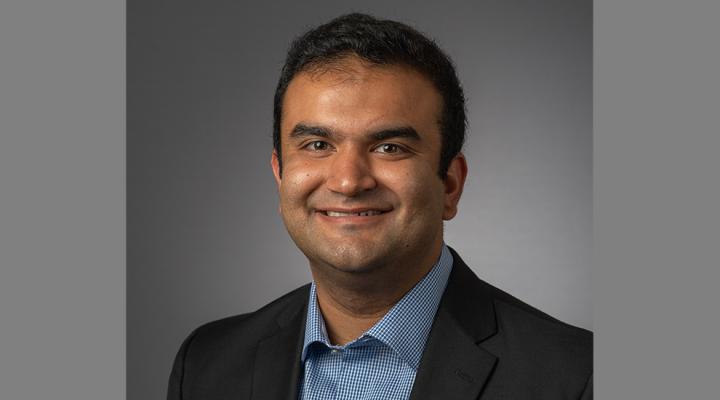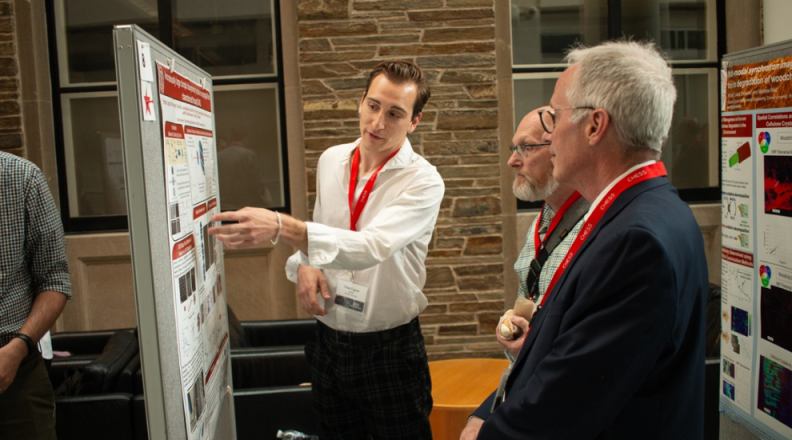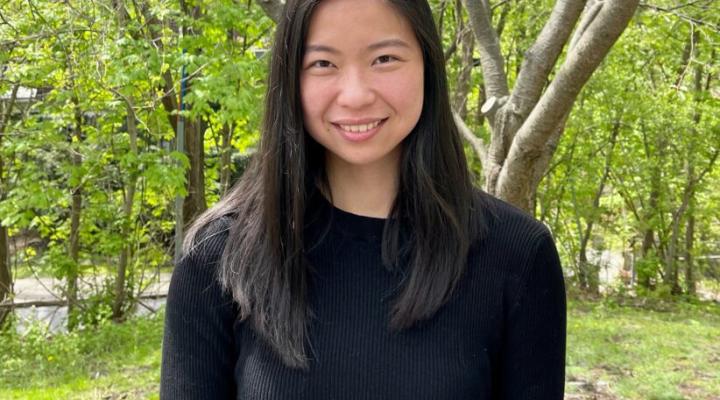Originally from Bucks County, PA, Thomas Ugras is no stranger to northeast winters. In fact, the spark that began his passion for engineering was ignited during a college tour while observing the demonstration of a robotic snowplow built by students.
“I could tell it was built out of all kinds of random odds and ends, but it worked so well and cleared a path in front of my eyes! In an instant, I was sure I wanted to do something engineering-related,” Ugras said. “That moment reveals what I like the most about this field – the ability to take what you learn in the classroom and use it to do something useful, something that has the capacity to change the world for the better, even in the smallest of ways.”
While working towards his Ph.D. in Cornell’s School of Applied and Engineering Physics (AEP), Ugras is also working alongside Professor Richard Robinson as a member of the Robinson Nanoscale Energy Research Group in Cornell’s Department of Materials Science and Engineering (MSE). The Robinson group’s mission is to develop a fundamental understanding of how to program and process nanoscale building blocks into functional structures, and to explain the structure-property relationships of the resulting nanostructured materials.
“AEP and MSE are both such interdisciplinary research environments,” Ugras said. “There are so many great instruments and facilities on campus, I can do nearly any form of characterization within a few days.” Among these state-of-the-art facilities is the Cornell High Energy Synchrotron Source (CHESS), a high-intensity X-ray source used by more than 1,000 scientists a year to conduct research in physics, chemistry, biology, and environmental and materials sciences. During the 2023 CHESS User Meeting Ugras was awarded “Best Technical Poster” for his presentation on “Anomalously Large Dissymmetry Factors in Chiroptic Nanocrystal Films.”
The Robinson Group recently discovered that nanocrystals can self-assemble into films that possess a highly aligned hierarchical structure spanning more than six orders of magnitude, from nanometer-scale NC filaments to centimeter-scale films. “I’ve taken these films and characterized them at two synchrotrons: right here on campus at CHESS and at the Diamond Light Source in the United Kingdom. At CHESS, we measured micro-focused small- and wide-angle X-ray scattering at the Functional Materials Beamline. At the Diamond Light Source we measured Mueller Matrix polarimetry maps, which describe how a material impacts the polarization response of light. Pairing these two very different techniques was a challenge for me, and I’m glad that the reviewers could appreciate the level of difficulty and the novelty,” Ugras said.
Presenting his research at conferences and events has been the highlight of Ugras’s Ph.D. experience so far. “Whether it’s with other researchers, middle school teachers during an outreach opportunity, or middle schoolers themselves, sharing my passion for my research and science broadly has been the most rewarding aspect of my Ph.D.,” Ugras said.
While he doesn’t know if he will work in academics or industry upon graduating, Ugras is certain that he will continue pursuing his research in the realm of “light-to-energy” conversion and he looks forward to sharing all of his future discoveries.





